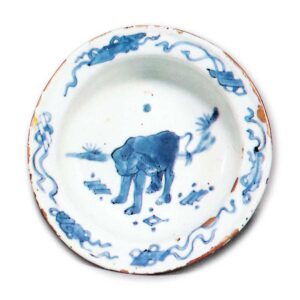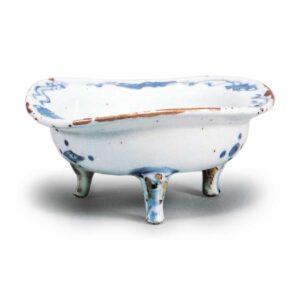

In some old-style dye works, the overglaze coating does not adhere to the clay and peels off along with the glaze, exposing the clay. This is commonly called “mushikui” (insect-eaten) because it looks as if an insect has eaten the glaze. This is also seen in Ko-Imari. Originally, it was a defect caused by the difference in shrinkage rate between the clay and the coating layer, but some people came to love the ancient simplicity of the technique, and some people began to deliberately mix and match the clay to produce mushigui.
Mushikoku is a term used to refer to the way in which the vitrified overglaze has become blackened and stained after prolonged use, as the unglazed clay inside it is exposed. This is seen in many Chinese wares, which is probably why the rim of the mouth was rimmed with iron to tighten the firing.



